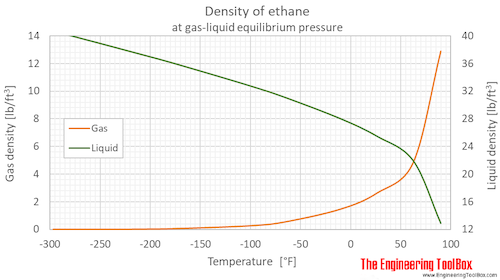Hey guys,
I've been having trouble with a pair of Sundyne LMV 311s and I'm running out of troubleshooting ideas. Figured I'd ask around to see if anyone has had similar issues or has any suggestions.
Background:
The pumps move ambient temperature light hydrocarbons at a low flow (cycles between 100 and 160 GPM based on unit demand) and high head (1200 FT). The motor is 3600 RPM and has a 2.3:1 speed increaser gearbox. Pumps are on flow control. One pump needs to be in service at all times with the second pump in standby.
The pumps do operate pretty far back on their curve with a hydraulic efficiency between 34% and 44%. The original design point was 250 GPM but we are still above the minimum stable flow of 88 GPM.
Problem:
In the last 4 months, power demand of the pumps has been slowly increasing until we hit our high power alarm. We pull the pump and don't find any smoking gun except a slight discoloration/dark coating of the wetted parts. We polish the impeller and diffuser, install a new or rebuilt seal, reinstall the pump, and power demand returns to normal for about 10 days before it starts to climb again.
I don't believe there is a change in the bulk material properties of the product because as soon as we shut down one pump for high amps, the second pump (assuming it was recently cleaned) pulls normal amps for ~10 days.
We've had the motors inspected and verified amps draw at the motor leads. Flow meter has been checked several times.
Pump performance does seem to diminish as amps get near FLA. ie the flow control valve has to open more to get the same flow.
Only theory we have is that the internal coating is causing excessive drag or recirculation. It's odd because the coating is very thin and can be polished off. I wouldn't expect this to cause a 30% increase in power demand but I've certainly been wrong before. The only source of this coating would be something in the process.
The pump operational point is not ideal given the design point of 250 GPM but we hadn't had any performance issues in the 5+ years these pumps have been in operation.
Thanks and any input or suggestions would be greatly appreciated!
I've been having trouble with a pair of Sundyne LMV 311s and I'm running out of troubleshooting ideas. Figured I'd ask around to see if anyone has had similar issues or has any suggestions.
Background:
The pumps move ambient temperature light hydrocarbons at a low flow (cycles between 100 and 160 GPM based on unit demand) and high head (1200 FT). The motor is 3600 RPM and has a 2.3:1 speed increaser gearbox. Pumps are on flow control. One pump needs to be in service at all times with the second pump in standby.
The pumps do operate pretty far back on their curve with a hydraulic efficiency between 34% and 44%. The original design point was 250 GPM but we are still above the minimum stable flow of 88 GPM.
Problem:
In the last 4 months, power demand of the pumps has been slowly increasing until we hit our high power alarm. We pull the pump and don't find any smoking gun except a slight discoloration/dark coating of the wetted parts. We polish the impeller and diffuser, install a new or rebuilt seal, reinstall the pump, and power demand returns to normal for about 10 days before it starts to climb again.
I don't believe there is a change in the bulk material properties of the product because as soon as we shut down one pump for high amps, the second pump (assuming it was recently cleaned) pulls normal amps for ~10 days.
We've had the motors inspected and verified amps draw at the motor leads. Flow meter has been checked several times.
Pump performance does seem to diminish as amps get near FLA. ie the flow control valve has to open more to get the same flow.
Only theory we have is that the internal coating is causing excessive drag or recirculation. It's odd because the coating is very thin and can be polished off. I wouldn't expect this to cause a 30% increase in power demand but I've certainly been wrong before. The only source of this coating would be something in the process.
The pump operational point is not ideal given the design point of 250 GPM but we hadn't had any performance issues in the 5+ years these pumps have been in operation.
Thanks and any input or suggestions would be greatly appreciated!

